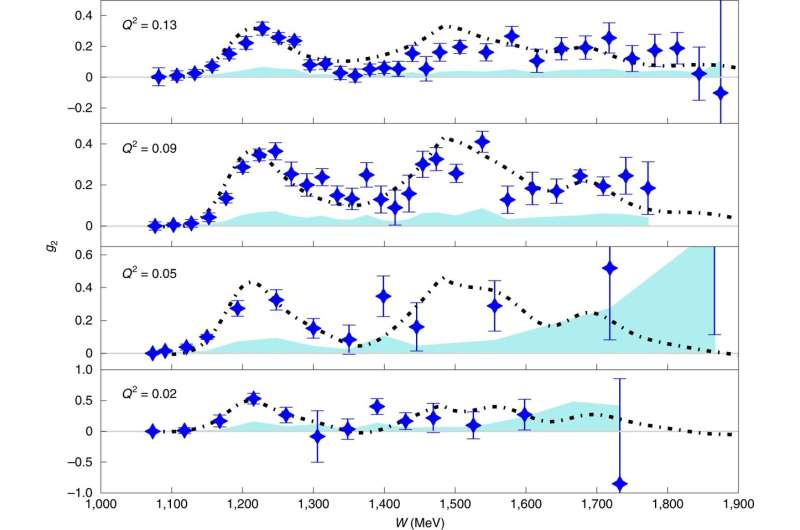Testing a fundamental force: New study advances our understanding of the universe

Research from a team of physicists at the University of New Hampshire is advancing the understanding of how protons, which comprise 95% of the mass of the visible universe, interact with each other. The results provide a benchmark for testing the strong force, one of the four fundamental forces in nature.
"There's a lot still unanswered about both of those things, the proton and the strong force," said David Ruth, Ph.D. candidate in physics and lead author. "This brings us a little bit closer to that understanding. It's a necessary piece of two very fundamental things in the universe."
The strong force governs how what's internal to the atom's nucleus—neutrons, protons and the quarks and gluons that make them up—bind together. It is the least understood of the four fundamental forces of nature, which include gravity, electromagnetism and the weak force.
In the study, published recently in the journal Nature Physics, the researchers tested two state-of-the-art, competing theoretical calculations of the strong force with an experiment probing the spin of the protons in a regime, or mode of operating, where the quarks, or elementary particles, that comprise them are at a great distance from each other. Their experimental findings agreed with one of the calculations but not the other.
This type of physics work requires a strong collaboration between theorists and experimentalists, so the next step in the strong force research is for theorists to look more closely at why the calculations don't agree. They explain that these calculations are very complex, each theory group makes different choices about how to do them and some of the calculation choices made by theorists ended up different. To better understand the strong force, they need to know which one is right, which one is wrong.
"If we really want to understand our world, we have to have a solid theory of that force," said Karl Slifer, professor of physics and astronomy and lead collaborator. "I'm not sure what the applications will be, but that understanding could push new technology in the future."
Slifer can imagine the work moving out of the theoretical or experimental and into practical applications, much as when our understanding of interactions between nucleons a century ago gave birth to applications like fission, fusion and nuclear power.
The extremely complex research took a decade to conduct and small army of graduate students, post-docs and technical staff six months to install and another six months to run. The experiment was run at the Department of Energy's Thomas Jefferson National Accelerator Facility and at that time it was the largest ever installation in Jefferson Lab's Hall A facility.
More information: D. Ruth et al, Proton spin structure and generalized polarizabilities in the strong quantum chromodynamics regime, Nature Physics (2022). DOI: 10.1038/s41567-022-01781-y
Journal information: Nature Physics
Provided by University of New Hampshire





















